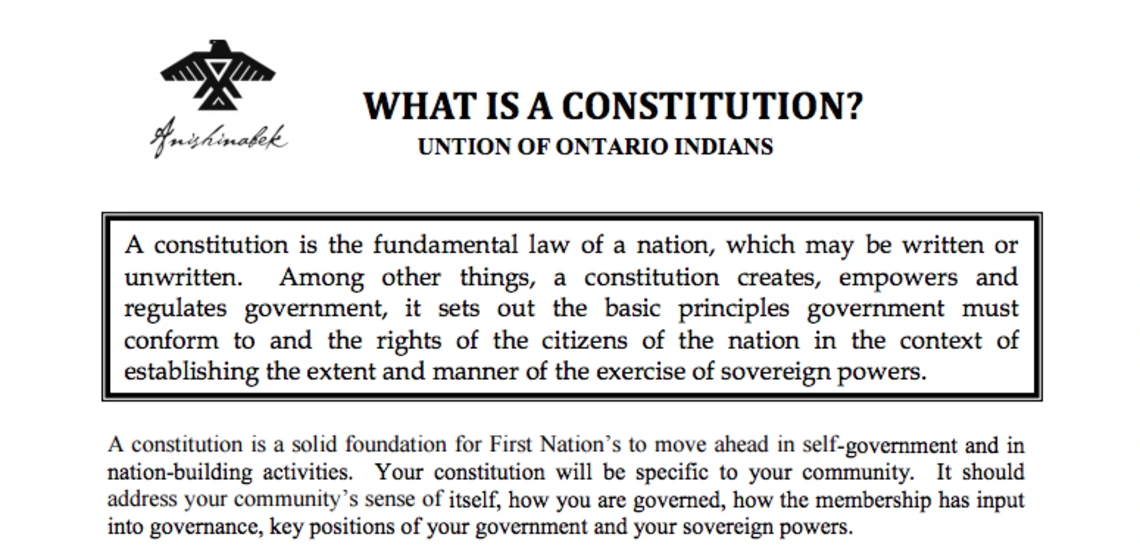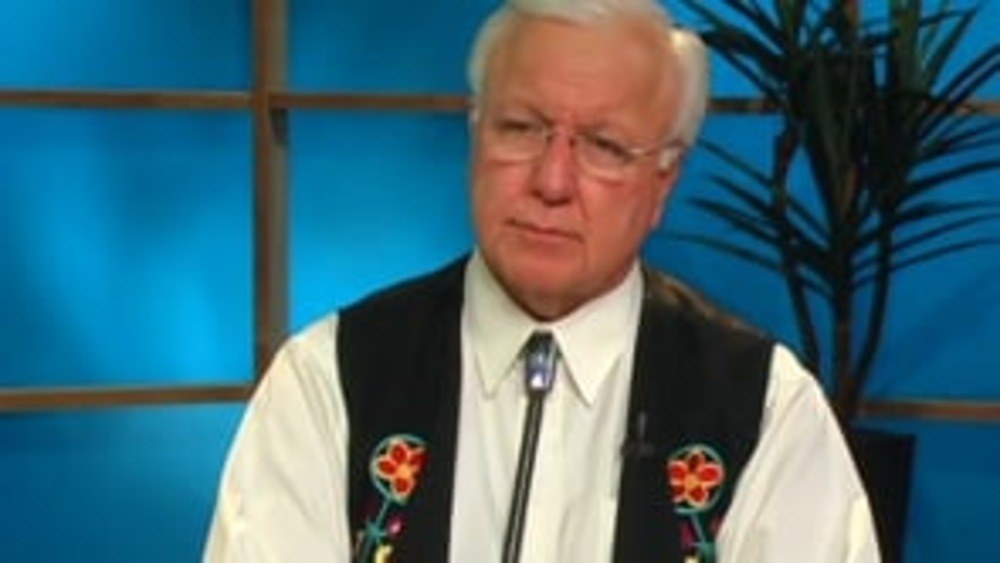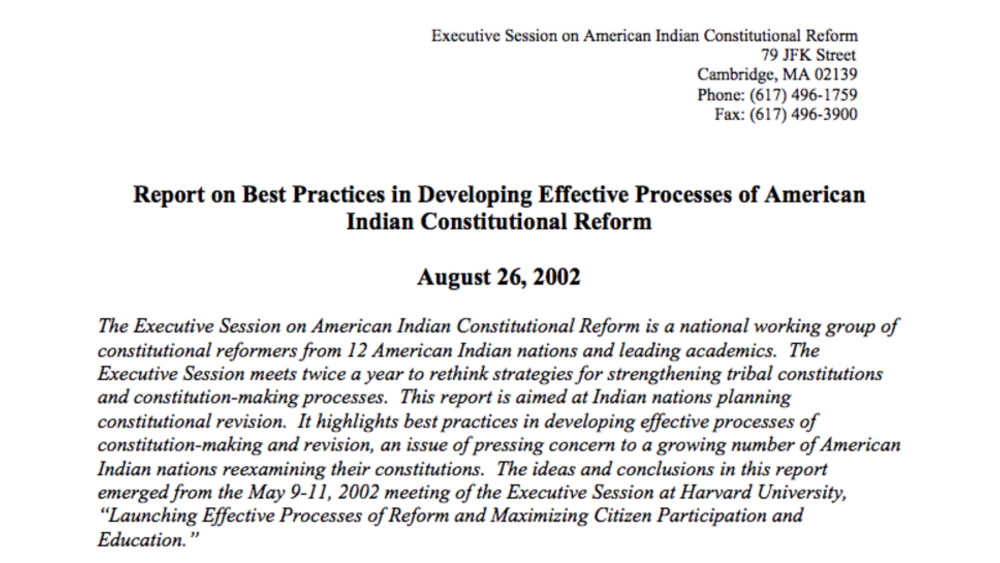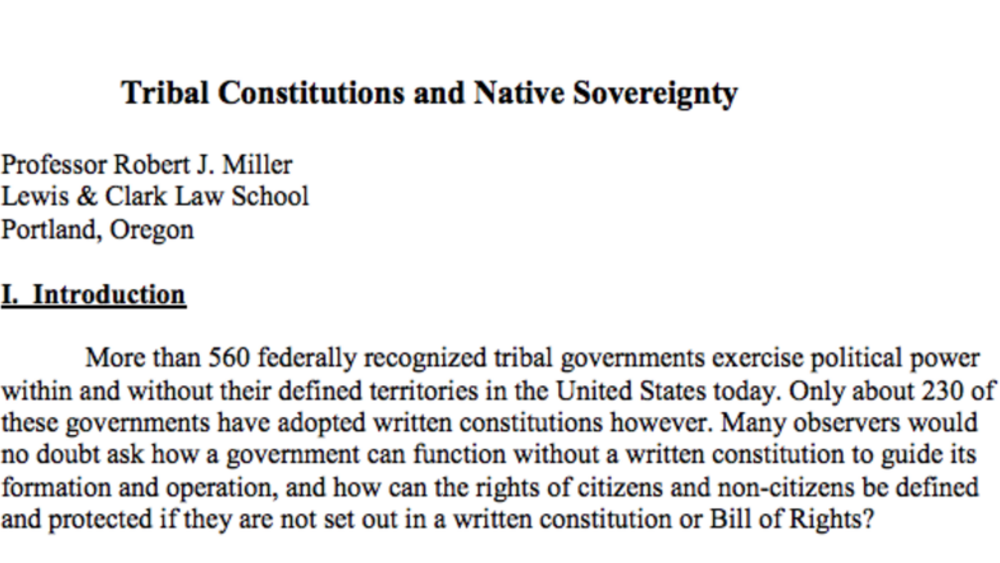A constitution is a solid foundation for First Nations to move ahead in self-government and in nation-building activities. Your constitution will be specific to your community. It should address your community's sense of itself, how you are governed, how the membership has input into governance, key positions of your government and your sovereign powers.
Additional Information
Anishinabek Nation. "First Nation Constitutions." Anishinabek Nation. North Bay, Ontario. Canada. 2012. Webpage. (http://www.anishinabek.ca/wp-content/uploads/2016/07/WHAT-IS-A-CONSTITUTION-w-LOGO.pdf, accessed April 11, 2023)




